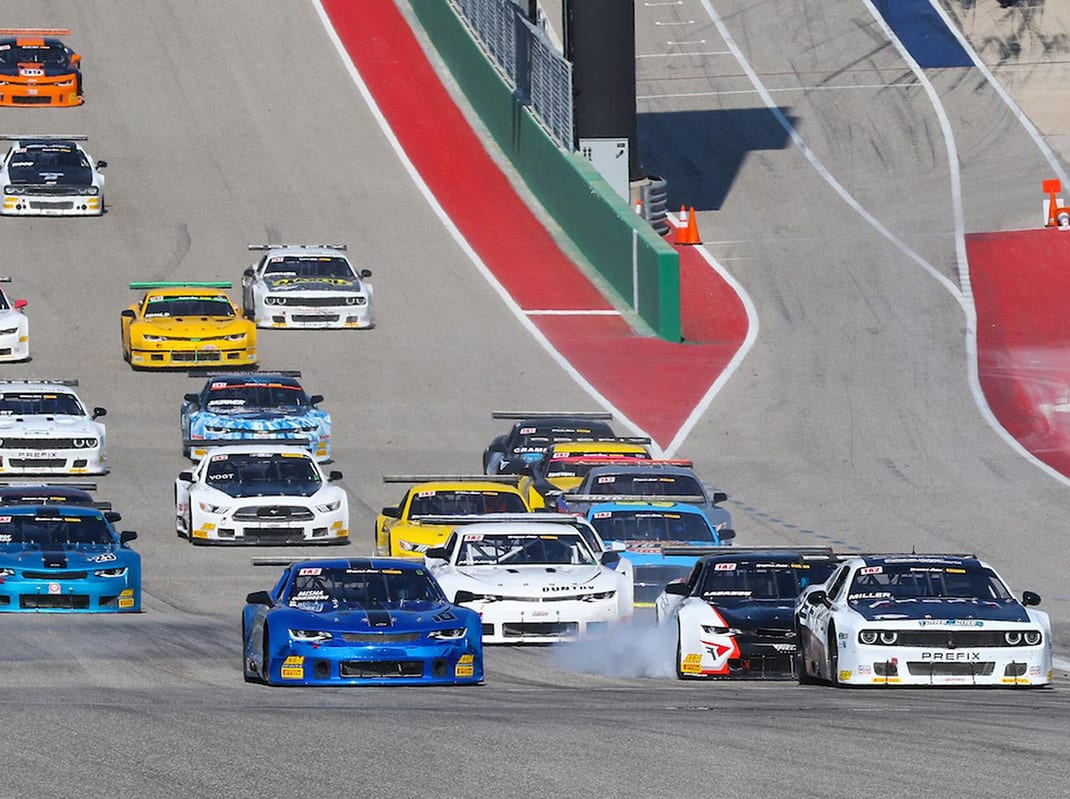The modern version of the Trans-Am Series is a throwback to an earlier era when the thunder of raw, unbridled American horsepower echoed from this country’s iconic road racing venues.
“First and foremost, the cars themselves are phenomenal beasts, still roaming the Earth at a time when the sport has become more sanitized and, frankly, a little more one dimensional,” road racing veteran and Trans-Am competitor Chris Dyson told SPEED SPORT. “Trans-Am remains one of last bastions of unapologetic, loud, brutally fast and very, very monstrous racing cars.
“That’s the central appeal of the series and it’s become more pronounced as time has gone on because Trans-Am has always occupied a really important position in American road racing. That position has become more profound as a lot of other racing series have retreated from high-powered, monstrous performance pieces and Trans-Am stands out even more now.”

“Old-school” is among the adjectives longtime racer Boris Said uses to describe today’s Trans-Am cars.
“Of all the cars I’ve driven, they are the most fun,” Said noted. “Now, everything is getting dumbed-down with traction control, ABS and paddle shifts. Trans-Am is 850 horsepower, gated shifter, no ABS and no traction control. The cars are just a blast to drive. It’s a car you need to manhandle; it’s kind of old-school.”
Born in 1966, the current Trans-Am has a lot in common with the series’ early years when legends such as Jerry Titus, Mark Donohue, Parnelli Jones and George Follmer traded paint in the muscle cars of the era.
“The series hasn’t evolved that much,” said John Clagett, who has promoted the series since 1984 and currently serves as president of the Trans-Am Race Co. “That means it has stayed relatively true to its core direction, which is a home for the Trans-Am class — the beautiful 850-horsepower, purpose-built race cars that so often get dismissed as no longer being part of the motorsports fabric. When people see the cars and hear them, it brings back what motorsports should be all about.”
The Trans-Am Series features two distinct classes.
“First, you have the TA class, which is essentially the same formula that has existed since the 1980s, as far as a purpose-built race car with a V-8-based engine and a pony car-type body package, sports cars as well,” Clagett explained. “The engine formula has changed over the course of time. It’s been made a lot cheaper by taking the engines that are essentially NASCAR engines and using them instead of having a customized platform like we had in the ’80s.
“The TA2 is the same thing, a purpose-built race car but with a 530-horsepower engine in a very affordable spec car. The Trans-Am class is open to technology with the exception of traction control and things like that, but the TA2 class is very much a spec formula that has kept those cars very affordable. It is our strongest class.”
Click below to continue reading.
